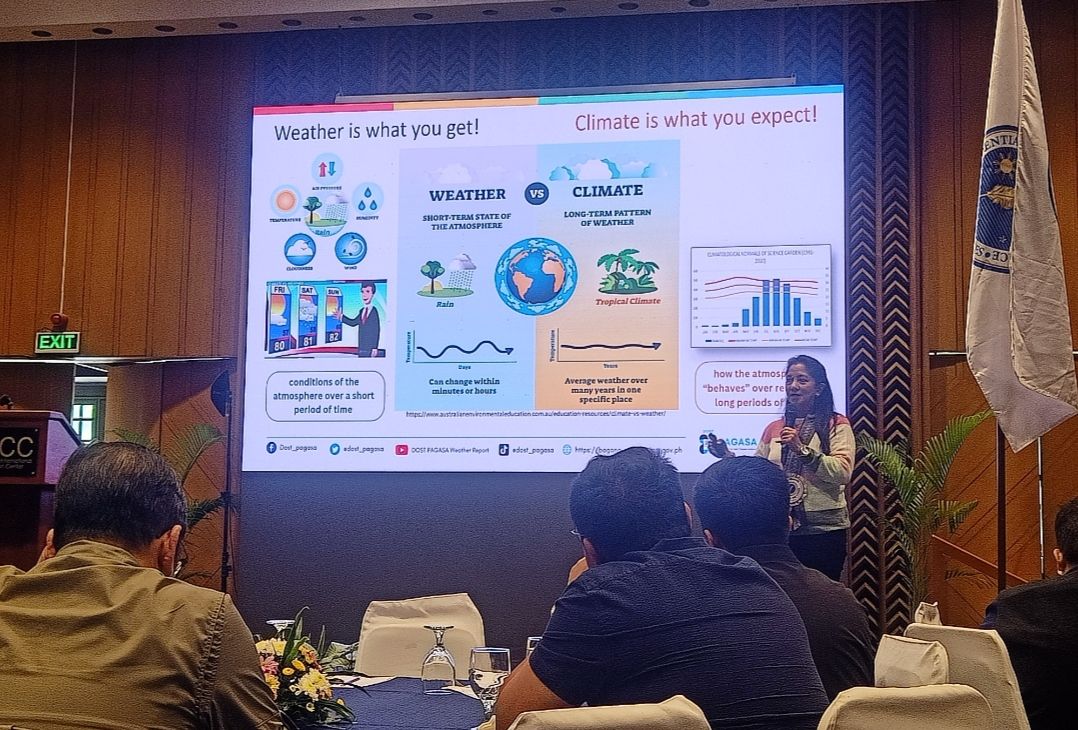'Fewer typhoons striking PH, but they are getting more intense' - PAGASA

There is a downward trend in the frequency of tropical cyclones (bagyo) forming and hitting the Philippines but they are undoubtedly getting stronger, according to a weather expert.
The pattern is attributed to global warming as a result of climate change that is affecting not only the Philippines but the whole world, according to Ms. Analiza Solis, chief of the Climate Monitoring and Prediction Section of the Philippine Atmospheric, Geophysical and Astronomical Services Administration (PAGASA).
Solis shared her insights on the current trends in media forecasting during a seminar-workshop dubbed as “Covering the Crisis: Media Workshop on Disaster Communications” held on Saturday, Nov. 23, at the Philippine International Convention Center (PICC) in Pasay City. The event was organized by the Presidential Communications Office (PCO).
“During the past 10 years, we are getting an average of 19 to 20 typhoons (per year). Right now, we seldom hit the 19th to 20th mark. So based on our historical record on tropical cyclone occurrences and frequency from 1948 to 2023, there is a decreasing trend in the number of tropical cyclones [forming] but an increasing trend in the number of typhoons that are getting more intense,” Solis said.
However, a rare occurrence happened recently when six typhoons struck the country and left a trail of destruction in just a month, from Severe Tropical Storm “Kristine”, Super Typhoon “Leon”, Typhoon “Marce”, Severe Tropical Storm “Nika”, Super Typhoon “Ofel”, and Super Typhoon “Pepito”.
These storms brought relentless threats of heavy rains, severe winds, flooding, and life-threatening storm surges to the public.
According to Solis, the primary contributor to this new trend is global warming as a result of climate change.
Global warming refers to the long-term warming of the planet, according to the National Aeronautics and Space Administration (NASA) while climate change encompasses global warming, but refers to the broader range of changes that are happening to our planet. These include rising sea levels and shrinking mountain glaciers among others.
“The warming of ocean temperature has a bigger contribution compared to the warming of land. We can see its effect during El Nino. When La Nina takes over, there is only a slight drop in the ocean temperature. This means our ocean temperature is getting hotter and hotter which greatly contributes to global warming,” Solis noted.
Role of media
Meanwhile, the workshop also highlighted the crucial role of media in bridging key warnings from PAGASA to the public to avoid the loss of lives and damage to properties when calamities strike.
Mr. Manuel Mogato, a multi-awarded journalist, recalled his experience when he covered the Super Typhoon “Yolanda” in Tacloban in 2013, one of the deadliest and most destructive typhoons to hit the country, claiming the lives of around 6,300 people with 1,600 others missing.
“There are many lessons that can be learned from the Yolanda experience. First and foremost is, accurate, fair and understandable information must be disseminated to the public to avert disaster. Journalists must avoid jargon and explain in layman's term scientific terms for the public to understand the dangers, the risks and the threats to their lives,” he said.
“We can help safe lives or we can worsen people's lives and cause disasters if we don’t do our jobs,” the Pulitzer-award winning journalist added.
Asst. Sec. Julius Leonen, chief of PCO integrated news operations, said the workshop represented the government’s commitment to safeguarding the nation amid the increasing risks posed by climate change and natural disasters.
“This effort aims to not only inform the public but also to foster trust, inspire action, and empower our citizens to build a culture of preparedness,” he said.